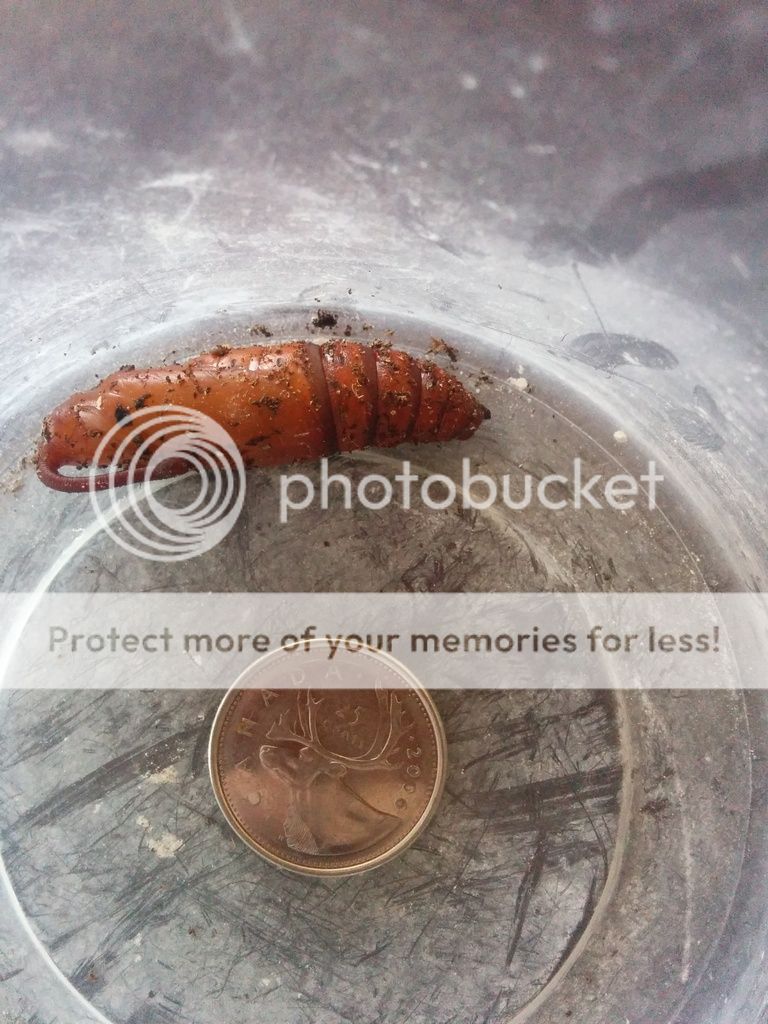MsCham
New Member
Okay, so for anyone else who hadn't bothered to look up what hornworm pupae looks like because your cham just gobbles them up too fast for them to last that long... here is what I found after transplanting my ficus plant.
After thoroughly freaking out that some unknown cocoon-like thing of this size was in the bottom of my plant (when I expected nothing but dirt, or a cricket or two), I placed it in this container and set out to identify it! Apparently one of the 5 hornworms my cham gets every two weeks managed to dodge my boy and burrow all the way to the bottom of my ficus and turned into this.
Really quite excited to see it 'hatch' or whatever it does, and then to release it back into my cham's cage. I get the feeling it wont get away this time. ;P
If anyone knows how to tell how far (ish) along this guy is in his 3 month journey to wings, let me know!

After thoroughly freaking out that some unknown cocoon-like thing of this size was in the bottom of my plant (when I expected nothing but dirt, or a cricket or two), I placed it in this container and set out to identify it! Apparently one of the 5 hornworms my cham gets every two weeks managed to dodge my boy and burrow all the way to the bottom of my ficus and turned into this.
Really quite excited to see it 'hatch' or whatever it does, and then to release it back into my cham's cage. I get the feeling it wont get away this time. ;P
If anyone knows how to tell how far (ish) along this guy is in his 3 month journey to wings, let me know!



